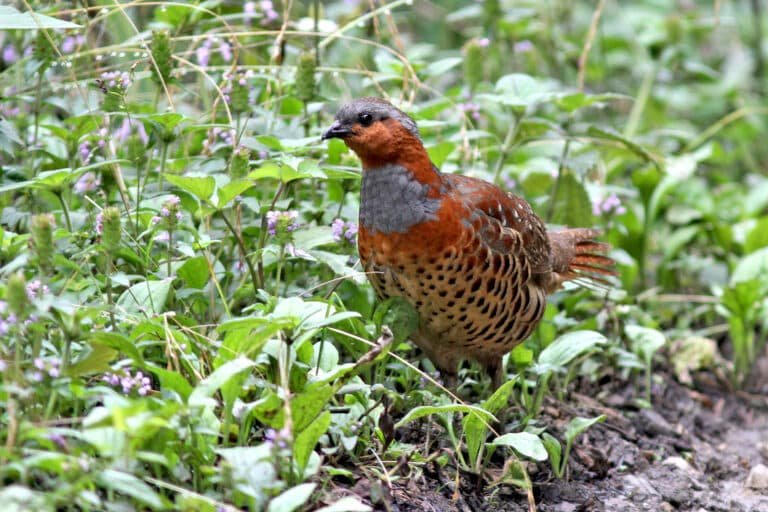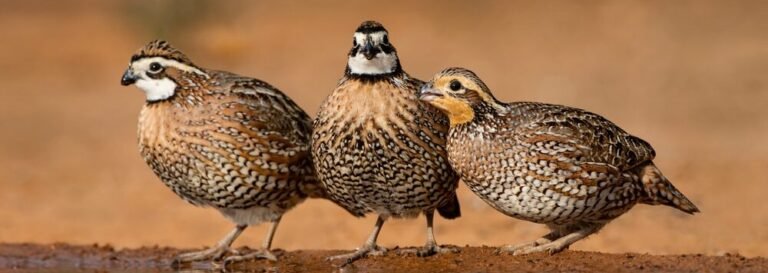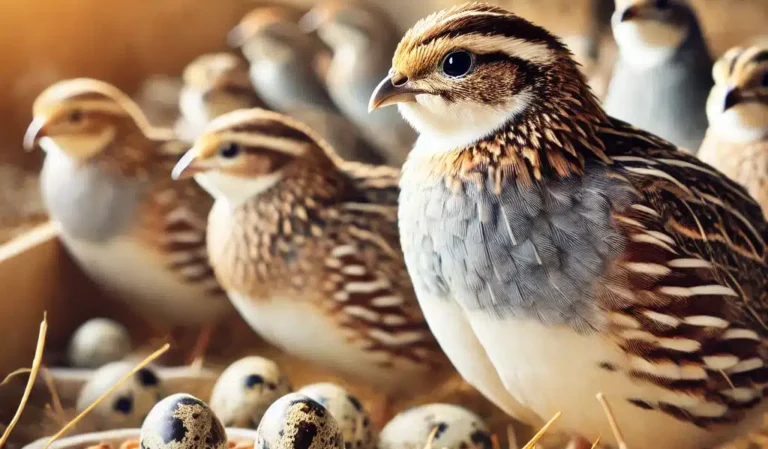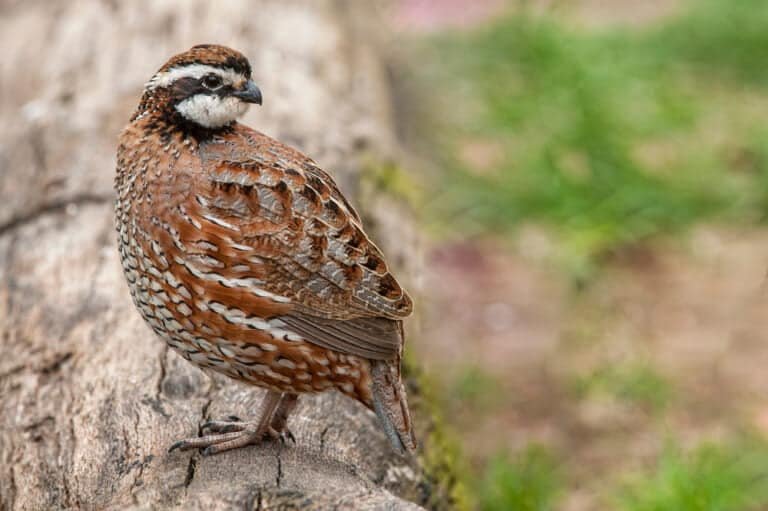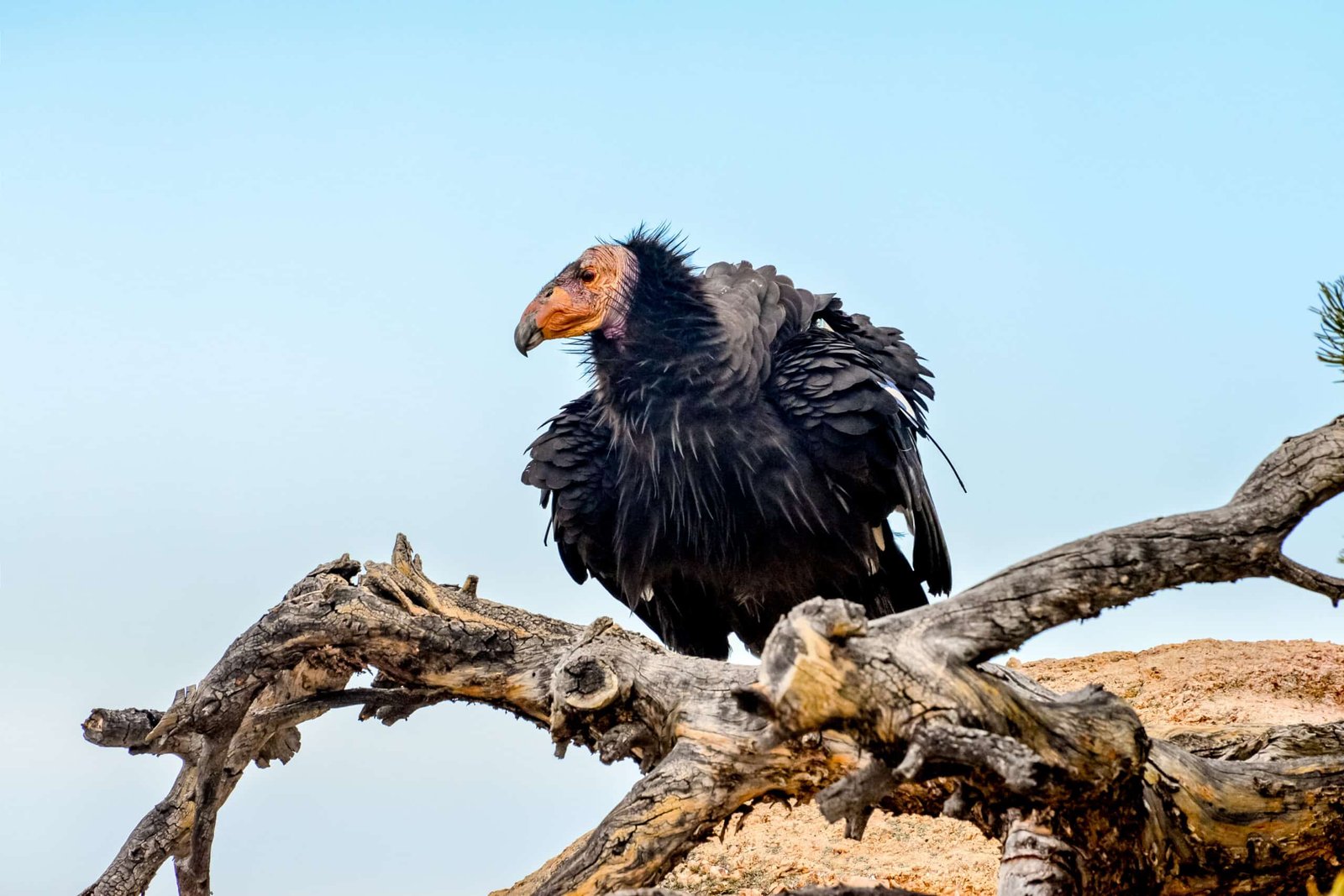Raising Quail 101: Beginner’s Guide to a Successful Covey
From the enchanting quail calls that fill the air to their swift and agile movements, these small game birds have captivated humans for centuries. Quail belong to the family Phasianidae and are renowned for their charming appearance and delightful behavior. With over 130 species scattered across various continents, quail have become a beloved choice for enthusiasts seeking a rewarding and sustainable endeavor. In this blog, we will discuss raising quail.
Advantages and Benefits of Raising Quail
Embarking on the journey of raising quail opens up a plethora of advantages that extend beyond the simple joy of tending to these remarkable birds. Firstly, quail offer a considerably low-maintenance alternative to larger poultry species, such as chickens or ducks.
Their petite size means they require less space, making them suitable for urban settings or smaller properties. Moreover, quail are known for their rapid growth rate, reaching maturity within 6-8 weeks—a substantially shorter time frame than other game birds.
This characteristic makes them an appealing choice for those seeking a quick return on investment or a fast turnaround in meat production. Furthermore, quail are exceptionally prolific layers, often producing over 200 eggs per year per bird.
This impressive egg-laying capacity ensures a constant supply of fresh eggs. It presents opportunities for profit through sales to local markets or individuals interested in obtaining quail eggs with exceptional nutritional qualities. Raising quail provides an unparalleled opportunity to connect with nature.
Observing these fascinating creatures in their natural habitat can be an invaluable educational experience for children and adults alike. Witnessing firsthand the intricate social dynamics and nurturing instincts these captivating birds display is both humbling and enriching.
As we delve into each aspect of raising quail throughout this comprehensive guide, you will discover the intricate details necessary to embark on this delightful journey. From the initial selection of quail species to mastering their care and ensuring optimal health, we shall explore every nuance required to raise these endearing small game birds successfully.
Getting Started with Quail Farming
Choosing the Right Quail Species for Your Needs
Selecting the appropriate quail species that aligns with your objectives is crucial when venturing into quail farming. While there are various species available, two popular ones frequently chosen by farmers are Coturnix and Bobwhite quail.
Coturnix quail (Japanese quail) are highly preferred for their remarkable egg-laying capabilities. They reach maturity quickly, usually within 6-8 weeks, and start laying eggs prolifically soon after. Their small size makes them suitable for confined spaces.
On the other hand, Bobwhite quail are favored by gamebird enthusiasts as they offer a delightful hunting experience. Known for their distinctive whistling call, these birds require more space than Coturnix quail due to their larger size.
Understanding the Basic Requirements for Housing and Space
Providing suitable housing and ample space is vital to ensure the health and well-being of your quail flock. Quails can be housed in various enclosures based on your available resources and preferences.
Cages: Wire cages are commonly used in commercial operations due to their ease of cleaning and efficient space utilization. These cages should have a solid bottom or a wire mesh with small gaps to prevent leg injuries.
Aviaries: If you have more space, setting up an aviary allows your birds to exhibit natural behaviors like flying short distances and dust bathing. Aviaries should be fully enclosed with sturdy netting or wire mesh to protect against predators.
Pens: Quails in pens typically have access to indoor shelters and outdoor roaming areas. Pens should be securely fenced to protect the quail from predators while allowing them to enjoy fresh air and natural foraging opportunities.
Ideal Temperature and Lighting Conditions for Quail
Maintaining optimal temperature and lighting conditions is essential for ensuring the health, growth, and productive performance of your quail flock.
Temperature: Quails are sensitive to extreme temperatures. The ideal temperature range for quail is around 60-75°F (15-24°C) during the day and slightly cooler at night. Providing a well-insulated housing structure with proper ventilation helps regulate temperature fluctuations.
Lighting: Quails require a consistent lighting schedule to stimulate their reproductive functions (in egg-laying species) and overall well-being. Providing approximately 14-16 hours of light daily promotes better egg production. Supplementing natural light with artificial lighting in darker months can help maintain consistent egg-laying patterns.
Importance of Providing Adequate Ventilation
Adequate ventilation is crucial in quail housing to ensure good air quality, prevent respiratory issues, and control moisture levels within the enclosure.
Air Quality: Proper ventilation helps remove ammonia fumes from accumulated waste, reducing respiratory stress on the birds. Fresh air circulation prevents harmful bacteria or mold buildup within the housing structure.
Moisture Control: High humidity levels can lead to damp bedding or surfaces, which are conducive to bacterial growth and may cause foot-related issues in quail.
Effective ventilation aids in maintaining suitable humidity levels by allowing excess moisture to escape. By considering these aspects when getting started with quail farming, you will be on your way to establishing a successful operation that meets your specific needs while providing optimal conditions for these fascinating small game birds.
Feeding and Nutrition for Quail
Discussing the Nutritional Needs of Quail at Different Stages
Quail have specific nutritional requirements that vary depending on their life stages. Understanding these needs is crucial to ensure optimal growth, development, and overall health.
For chicks, a high-protein diet is essential for their rapid growth and feather development. A starter feed with around 24-28% protein content is recommended during the first few weeks of life.
As they transition into adulthood, the protein requirement decreases gradually to 18-22%. Understanding these variations in dietary needs allows quail owners to provide appropriate nutrition throughout each growth stage.
Highlighting Suitable Feed Options
Regarding feeding quail, there are two main options: commercial feeds and homemade recipes. Commercial feeds are readily available in the market and specifically formulated to meet the dietary requirements of quail.
These feeds come in various forms, such as crumbles or pellets, providing a balanced mix of proteins, carbohydrates, vitamins, and minerals necessary for their well-being. Selecting high-quality commercial feeds from reputable brands catering to quail nutrition is important.
In addition to commercial feeds, supplementing with fresh greens is highly beneficial for quail. Leafy greens like spinach, kale, and lettuce offer valuable vitamins and minerals while adding variety to their diet.
Furthermore, offering insects like mealworms or crickets provides an excellent source of animal protein for optimal muscle development. Quails also need access to grit (small stones), which they consume voluntarily to aid digestion by grinding down food particles within their gizzard.
Nutritional Composition of Commercial Feeds for Optimal Growth and Health
Commercial feeds formulated explicitly for quail are carefully designed to meet their specific nutritional requirements at different stages of life. These feeds typically contain a balanced ratio of proteins, fats, carbohydrates, vitamins, and minerals.
Proteins are important as they contribute to muscle development and egg production in adult quail. The ideal protein content in commercial feeds for quail should be around 18-24%.
Fats provide a concentrated energy source and are crucial for maintaining healthy skin and feathers. Carbohydrates serve as an additional energy source, providing the necessary fuel for daily activities.
Vitamins play a vital role in overall health and immune function. Quail require vitamins like vitamins A, D3, E, K, B12, folic acid, and choline in their diet to support growth and maintain optimal health.
Essential minerals such as calcium, phosphorus, sodium, potassium, and magnesium are included to promote strong bones and eggshell formation. Understanding the nutritional needs of quail at different stages is essential for their well-being.
Providing appropriate commercial feeds that offer balanced nutrition tailored to each life stage of your quail’s development journey ensures optimal growth and robust health. Additionally, supplementing their diet with fresh greens rich in vitamins and minerals and insects for animal protein will result in a more diverse diet, contributing to their overall vitality.
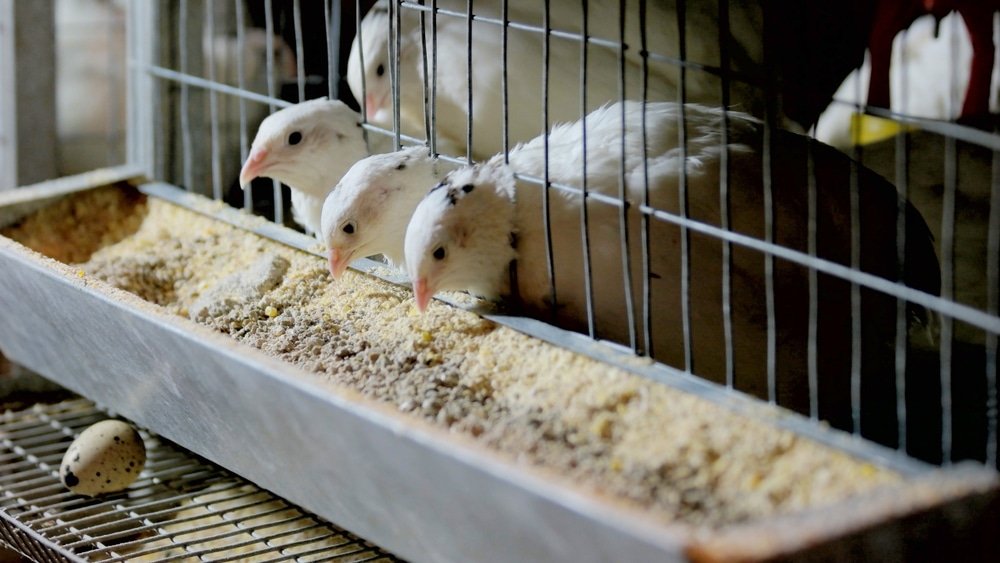
Breeding and Incubation Process
Explaining the reproductive behavior of quail
Quail are known for their fascinating reproductive behavior involving intricate courtship displays and mating rituals. During the breeding season, male quail showcase elaborate mating rituals to attract females.
They puff up their chests, engage in vigorous head-bobbing movements, and emit distinctive calls to announce their availability to potential mates. These captivating displays serve as a form of communication and indicate the male’s health and genetic fitness.
Mating rituals and courtship displays among males
Male quail wear spectacular courtship displays to woo females during the breeding season. They establish territories by marking boundaries with scent secretions from specialized glands on their feathers.
Once a female enters a male’s territory, he proceeds with his elaborate display by puffing up his chest feathers, extending his neck, and rapidly bobbing his head up and down in an eye-catching manner. These mesmerizing movements are accompanied by musical calls that vary among quail species.
The males aim to capture the attention of females through these courtship vocalizations, which can range from soft cooing sounds to more complex melodies created by specific combinations of notes. The intensity of these courtship displays often reveals the competitiveness among male quail as they strive to win over potential mates.
Understanding egg-laying patterns in females
Once successfully courted by a male, female quail begin laying eggs in carefully chosen spots within their breeding environment—often secluded areas that provide privacy and protection for nesting activities. Breeders must create suitable nesting conditions for quail females by providing well-designed nest boxes or small shelters where they feel secure enough to lay eggs undisturbed. The frequency of egg-laying can vary depending on factors such as species, age, and overall health of the female quail.
Generally, most quail species lay one egg daily in the early morning or late afternoon. Maintaining an optimal breeding environment with proper nutrition and a stress-free atmosphere increases egg production rates.
Setting up a suitable breeding environment (nest boxes, privacy)
Providing quail with appropriate nesting areas that offer privacy and security is essential to ensure successful breeding and egg-laying. Nest boxes are commonly used for this purpose.
These boxes should be designed with appropriate dimensions, allowing enough space for the female quail to comfortably lay her eggs and move around without feeling cramped. The nest box material should be soft enough to cushion the eggs but not too dense that it retains excess moisture.
Wood shavings or straws make excellent choices for nest bedding as they provide insulation while ensuring good air circulation within the nest box. Placing adequate nesting material inside each box helps maintain proper temperature levels during incubation.
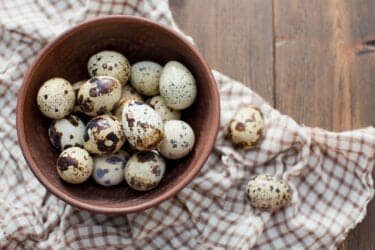
Step-by-step guide to incubating quail eggs successfully
Incubating quail eggs is an intricate process that requires precise temperature and humidity control to promote optimal embryo development. Here is a step-by-step guide:
1. Collecting Eggs: Gather freshly laid eggs from your breeding area, ensuring they are clean without cracks or deformities.
2. Preparing the Incubator: Set up an incubator specifically designed for bird eggs, adjusting it according to the manufacturer’s instructions regarding temperature and humidity requirements for quail (typically around 99-101°F / 37-38°C with humidity at 50-60%).
3. Placing Eggs in Incubator: Carefully place the collected eggs in designated slots or trays within the incubator while ensuring they are upright.
4. Temperature Regulation: Maintain a consistent temperature throughout the incubation period, regularly monitoring and adjusting the incubator settings to avoid drastic fluctuations.
5. Humidity Control: Monitor humidity levels within the incubator, adjusting them by increasing or decreasing moisture as required. This helps prevent dehydration or excessive moisture loss during incubation.
6. Candling Eggs: After a few days of incubation, use a small flashlight or an egg candler to examine the eggs. Candling allows you to observe embryo development by shining light through the shells and identifying viable eggs based on visible veins and signs of growth.
By following these steps diligently, you can increase your chances of successfully incubating quail eggs and witnessing healthy hatching outcomes.
Managing Quail Health and Disease Prevention
Common health issues in quail (respiratory infections, parasites)
Like any other living organism, quail are susceptible to various health issues. Respiratory infections and parasites are common problems encountered in quail farming.
Respiratory infections can be caused by bacteria, viruses, or fungi, which may lead to coughing, sneezing, nasal discharge, or labored breathing. It is crucial to monitor the overall behavior of the quail flock and promptly identify any signs of respiratory distress.
Additionally, parasites such as mites and lice can infest quail and cause discomfort or skin irritations. Regularly inspecting the birds for external parasites is essential for early detection and appropriate treatment.
Implementing preventative measures through hygiene practices
Maintaining a high level of hygiene is fundamental in preventing diseases among quail. One effective measure is ensuring regular cleaning of their housing facilities.
Thoroughly cleaning the cages or pens helps eliminate accumulated droppings and potential disease-causing agents in the environment. Using appropriate disinfectants during cleaning can further mitigate the risk of bacterial or fungal growth.
In addition to maintaining clean surroundings, providing clean water and feed is crucial to prevent contamination that could lead to digestive disorders or bacterial infections.
Regular cleaning
Proper sanitation measures should include removing bedding materials regularly, scrubbing surfaces with disinfectants, and ensuring clean water sources.

Conclusion
Knowing common health issues in quail, such as respiratory infections and parasites, quail farmers can implement effective preventative measures through proper hygiene practices. Regular cleaning of housing facilities and routine inspections for signs of illness allows for early detection and prompt treatment if necessary.
By following these recommended practices, quail farmers can maintain the health and well-being of their flock, ensuring optimal growth and productivity. Remember that a healthy quail is a happy quail, and creating an environment that prioritizes their welfare will result in a thriving quail farming experience.

